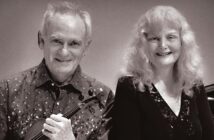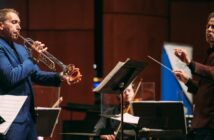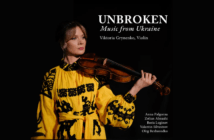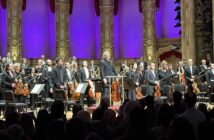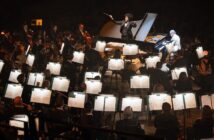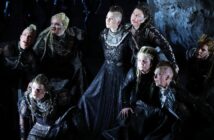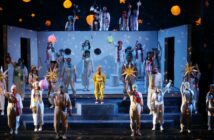On October 23, 2024, the stage of Bourgie Hall was graced with the presence of one of America’s premiere baroque ensembles, Musica Pacifica, which presented a repertoire of music from the 14th-17th century Dutch provinces. The music by the night’s composers —Tarquinio Merula, Jacob van Eyck, Nicolaus À Kempis, Jan Pierterszoon Sweelinck, Bernardino Borlasca, Johannes Schenk, Philippus van Wichel, Carolus Hacquart, Cornelis Kist and Johann Jakob Walther — is largely unknown, even by early music aficionados.
Judith Lindsberg (recorder) and Alexa Haynes-Pilon (viola da gamba) are the core members of Musica Pacifica. For their Montreal premiere, they were joined by local talent Sallynee Amawat on violin and Hank Knox on harpsichord.
What you missed:
Jakob van Eyck’s Engels Nachtegaeltje (The Little English Nightingale), a set of variations which imitates the call of the nightingale, was the perfect piece to showcase Lindsberg’s dazzling virtuosity. The progressively ascending twitters, warbles, and chirpings of this piece kept us all on the edge of our seats. This performance revealed that Linsberg truly deserves her unofficial title as “Jascha Heifetz of the Baroque recorder.”
Viola da Gambist Alexa Haynes-Pilon is also well deserving to be compared with illustrious figures of the past; her virtuosic finger-work and full-bodied tone share commonalities with some of the great rock guitarists such as Jimi Hendrix and Eric Clapton. A particular highlight of the concert was Johannes Schenk’s Sonata no. 1 in D major, which she played in duo with Hank Knox. The rollicking arpeggios were played with such a high-octane facility that I thought she might very well start playing them à la Hendrix (with her teeth).
Seeing Knox perform, it makes a lot of sense that one of his musical idols is Frank Zappa. His solo interpretation of Jan Pieterszoon Sweelinck’s Fantasia It ré mi fa so la à 4 was reminiscent of Zappa’s work: always messy and alive.
The virtuosic technique and rock-star personalities of these performers kept the audience thoroughly entertained throughout. Especially appreciated was Lindsberg’s commentary between pieces during which she showed us her variety of Baroque recorders and showed off her fantastic sense of humour (a quality she shares with Heifetz).
Gripes:
It seems like Amawat missed an entrance during Carolus Hacquart’s Sonata prima à 3. Though the blip could be only heard very slightly, it was exaggerated visually by Amawat’s facial expression which gave the mistake away. To Amawat, I would repeat what Judith Linsberg cheekily told the audience: “Whatever is known about these composers is written in our program notes!” The audience doesn’t know what this music is supposed to sound like, so act convinced, and your audience will be as well.
Lindsberg and Knox’s playing sometimes lacked polishing. Sweelinck’s Fanstasia sorely lacked a page-turner; Knox’s repetition of a chord at the beginning of a page-turn did break up the flow of the music. The beginning of Symphonia Secunda à 3 “Dolorosa” was also rather messy in the recorder.
The intensity that Linsberg, Haynes-Pilon and Knox brought to the ensemble was not matched by Amawat. Though her playing was very precise, it was too cautious for a group of players intent on musical risk-taking.
Though early musicians work diligently to capture if not the sound, then at least the spirit, of bygone eras, at the end of the day, we do not have recordings from these times. We cannot fully know what this music sounded like when it was first played. As such, the early musician must interpret this music with a certain forcefulness of spirit; she must be very convinced of what she is doing, lest it sound like a mere caricature of the past.
Musica Pacifica certainly has the zeal to play this music convincingly. When on tour, they require musicians who can match their fiery energy and take musical risks.
For more about Musica Pacifica visit: www.musicapacifica.org



